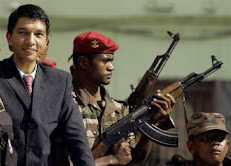Blood Phone
In 2006 Warner Bros. released Blood Diamond, an expose of the bloodshed and violence that lay behind the illicit diamond trade around the world. In an effort to avoid spoilers, I’ll merely say that the film takes place during the Sierra Leone Civil War, which lasted from 1991 to 2002. Control of the West African nation’s diamond trade was the major precipitant of the war, leading to a regional conflagration that included Liberia, the United Kingdom, and an array of splinter paramilitary groups.
The conflict that left 100,000 dead by some estimates, and nearly two million displaced, resulted in the Kimberly Process Certification Scheme, ratified by the UN.
The KPCS has been quite successful in accomplishing its mandate: the eradication of diamonds that have emanated from conflict zones, thus reducing the likelihood that war and exploitation will be financed by conflict diamonds. The idea that one’s wedding ring had blood on it ultimately prompted the international community to act.
But how would people react if the Motorola cell phone they were speaking on was covered in that very same blood? What about the Finding Nemo DVD you just saw with your kids? Or the desktop they just wrote up their homework on?
Many would dismiss this as hyperbole, another form of liberal knee-jerk guilt felt for factors beyond our control.
As we speak, a war of catastrophic proportions has reached its crescendo in the Democratic Republic of Congo (DRC). While the causes are myriad, prominent among them are coltan and cassiterite. Though the conflict’s origins lay elsewhere, these two minerals act as catalysts. Demand for electronic goods, many of which are comprised of coltan and cassiterite, is capitalized by militias who finance their operations by plundering these natural resources, and in the process unleashing incomprehensible violence on nearby villagers.
Also, check out this phenomenal piece on Western demand for electronics and their subsequent effect on the conflict in the DRC.
Sunday, February 8, 2009
Subscribe to:
Post Comments (Atom)











































No comments:
Post a Comment